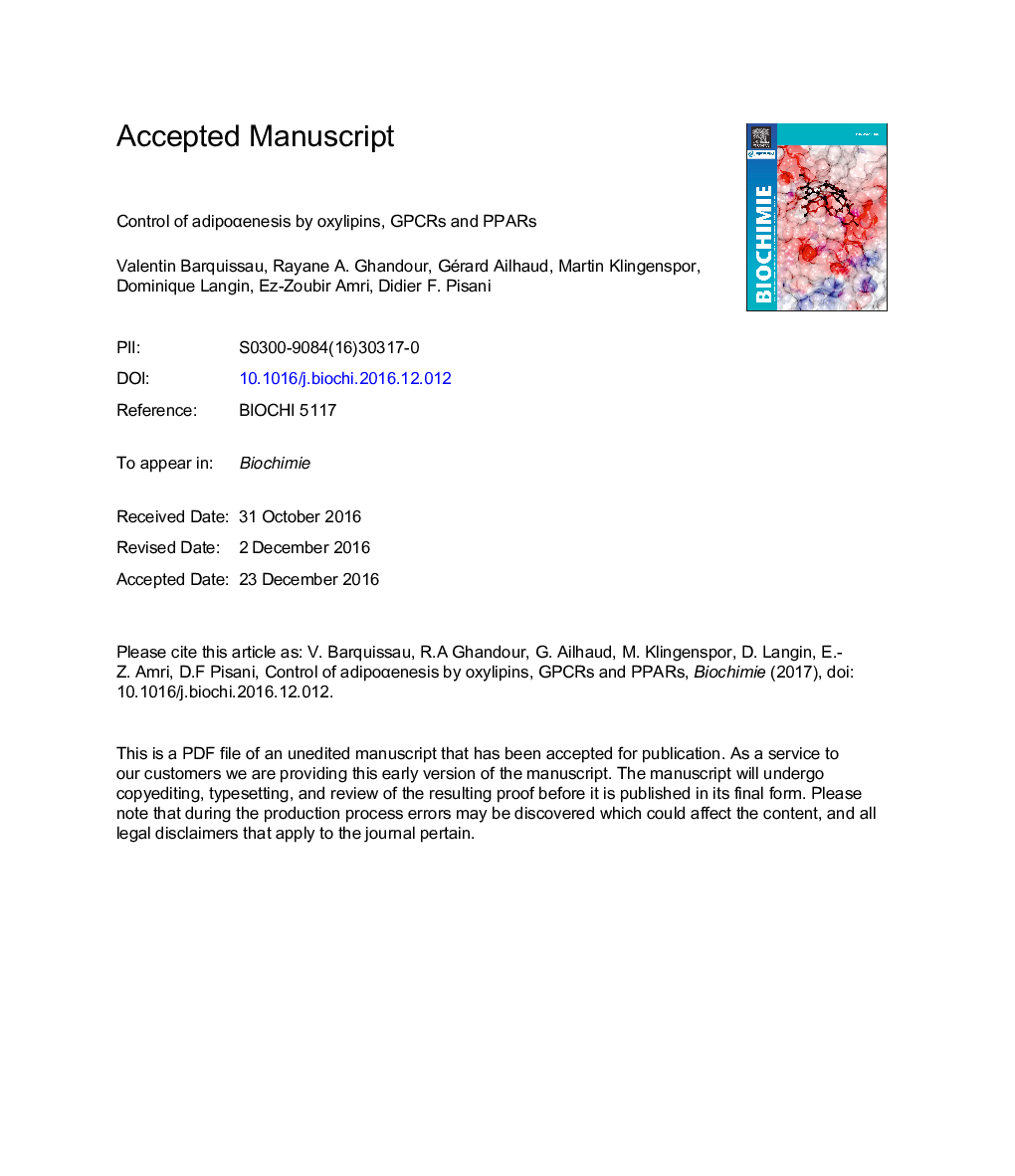| Article ID | Journal | Published Year | Pages | File Type |
|---|---|---|---|---|
| 5509006 | Biochimie | 2017 | 26 Pages |
Abstract
Oxylipins are bioactive metabolites derived from the oxygenation of Ï3 and Ï6 polyunsaturated fatty acids, triggered essentially by cyclooxygenase and lipoxygenase activities. Oxylipins are involved in the development and function of adipose tissue and their productions are strictly related to diet quality and quantity. Oxylipins signal via cell surface membrane (G Protein-coupled receptors) and nuclear receptors (peroxisome proliferator-activated receptors), two pathways playing a pivotal role in adipocyte biology. In this review, we made an attempt to cover the available knowledge about synthesis and molecular function of oxylipins known to modulate adipogenesis, adipocyte function and phenotype conversion, with a focus on their interaction with peroxisome proliferator-activated nuclear receptor family.
Keywords
EicosanoidPPARγBATLNAPPARProstanoidPPARαGPCRDGLACRECOXEPAUCPPPARβ/δAdipocytecyclooxygenasePPREdihomo-γ-linolenic acidα-linolenic acidArachidonic acidEicosapentaenoic aciddocosahexaenoic acidLinoleic acidPolyunsaturated fatty acidsPUFALOXWAT, White adipose tissuebrown adipose tissuethromboxaneARADHAResolvinPPAR response elementlipoxygenaseUncoupling proteinprostaglandinWATperoxisome proliferator-activated receptorG protein-coupled receptor
Related Topics
Life Sciences
Biochemistry, Genetics and Molecular Biology
Biochemistry
Authors
Valentin Barquissau, Rayane A. Ghandour, Gérard Ailhaud, Martin Klingenspor, Dominique Langin, Ez-Zoubir Amri, Didier F. Pisani,
